

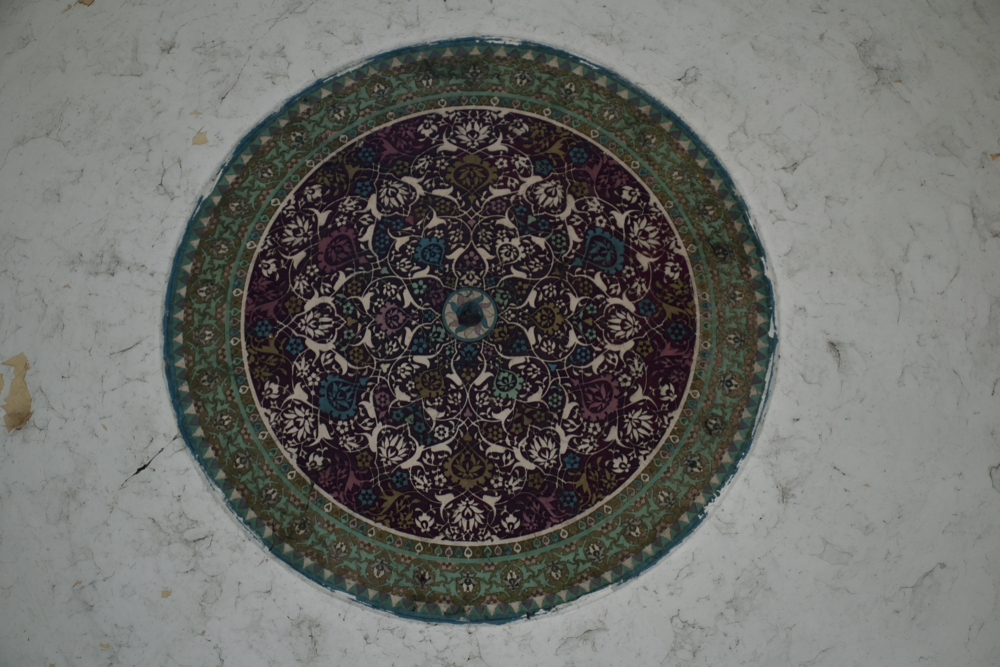
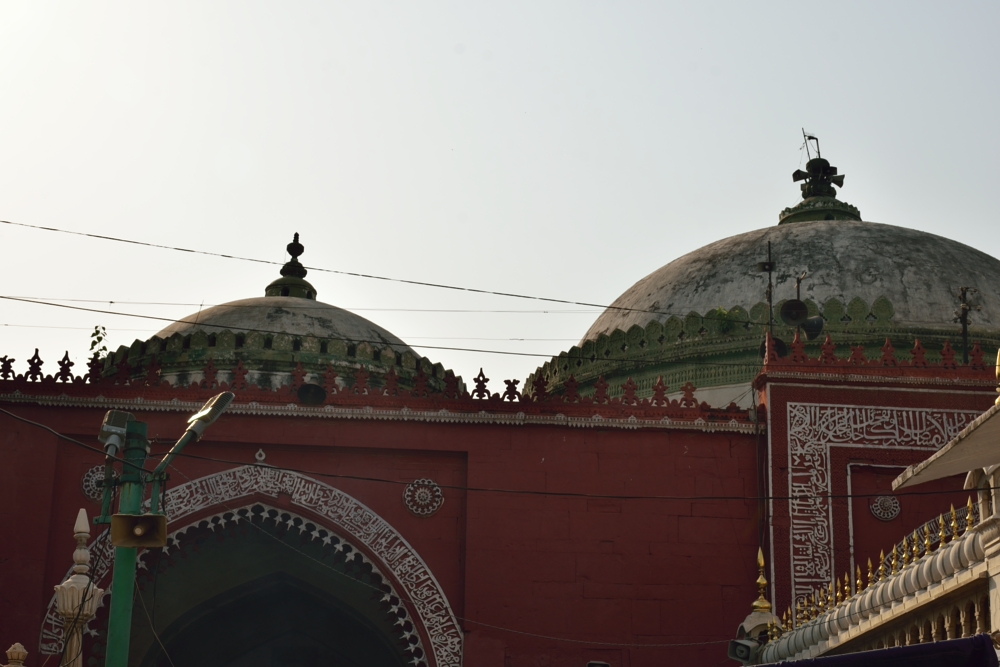
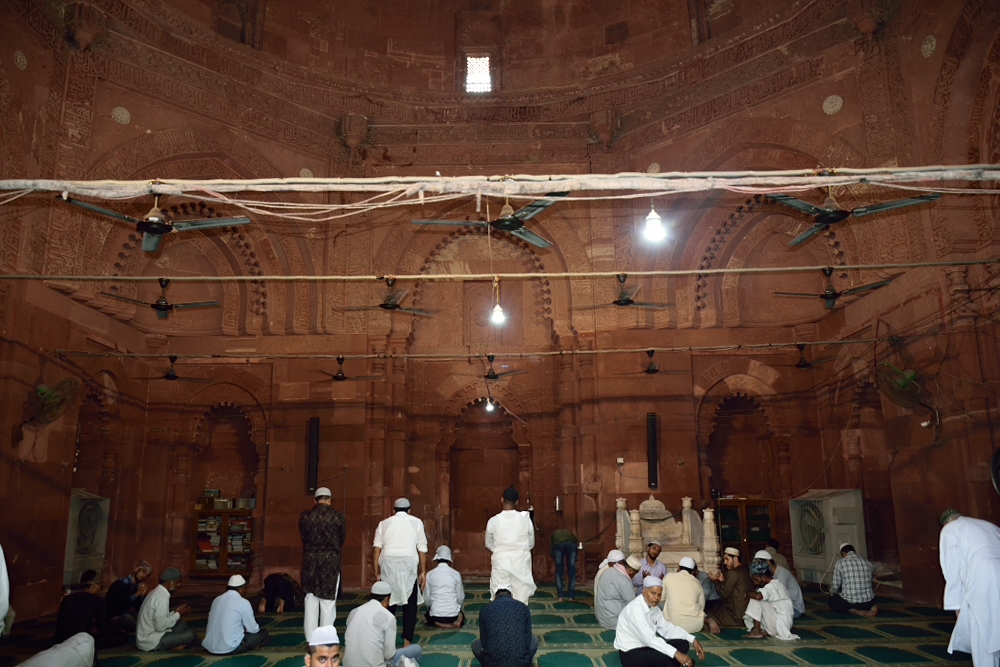
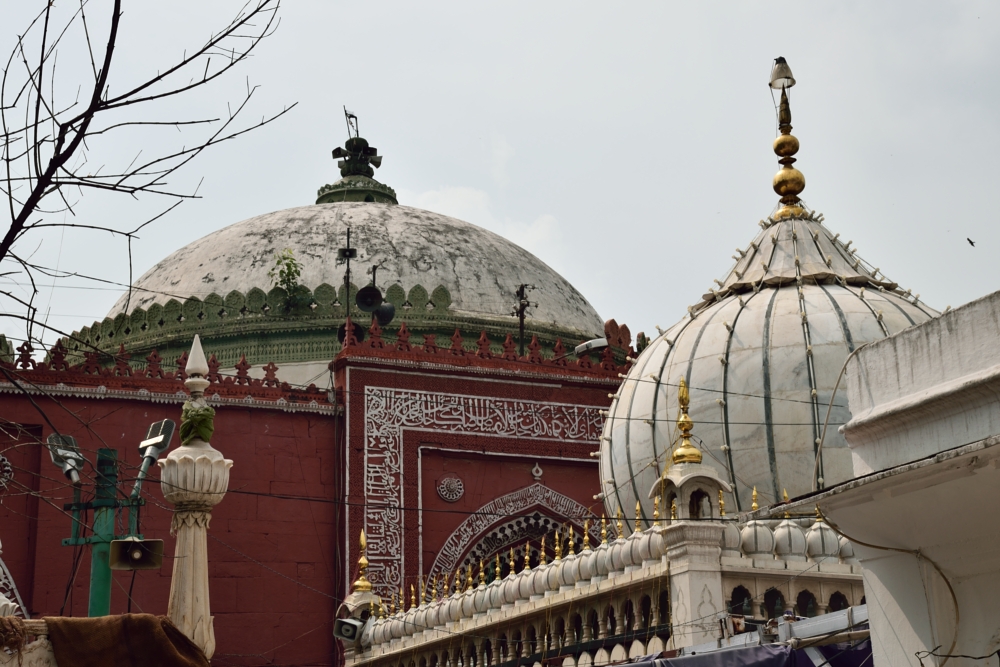
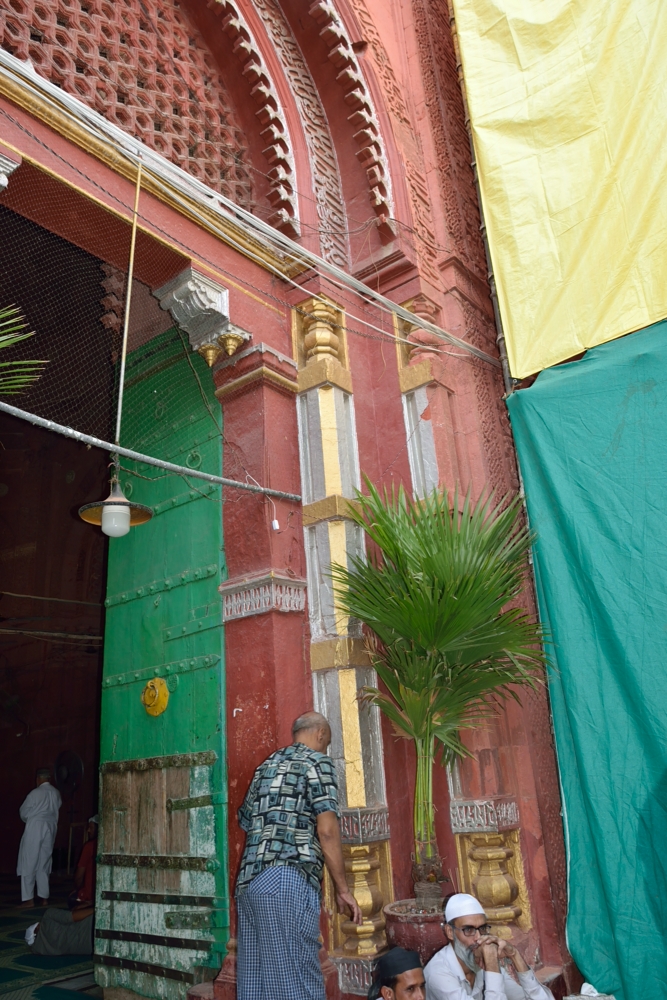
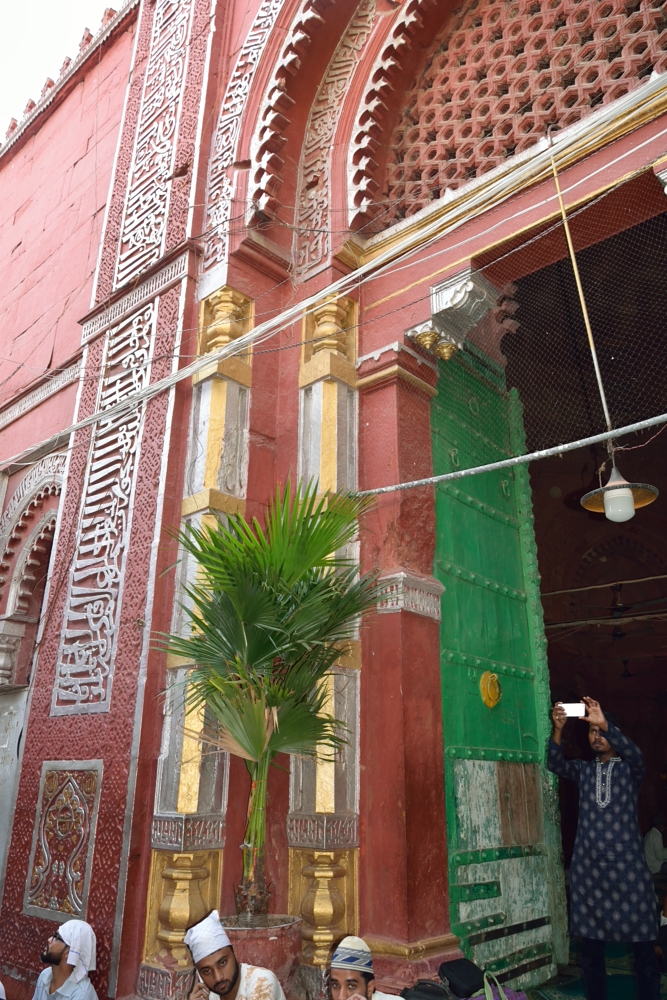
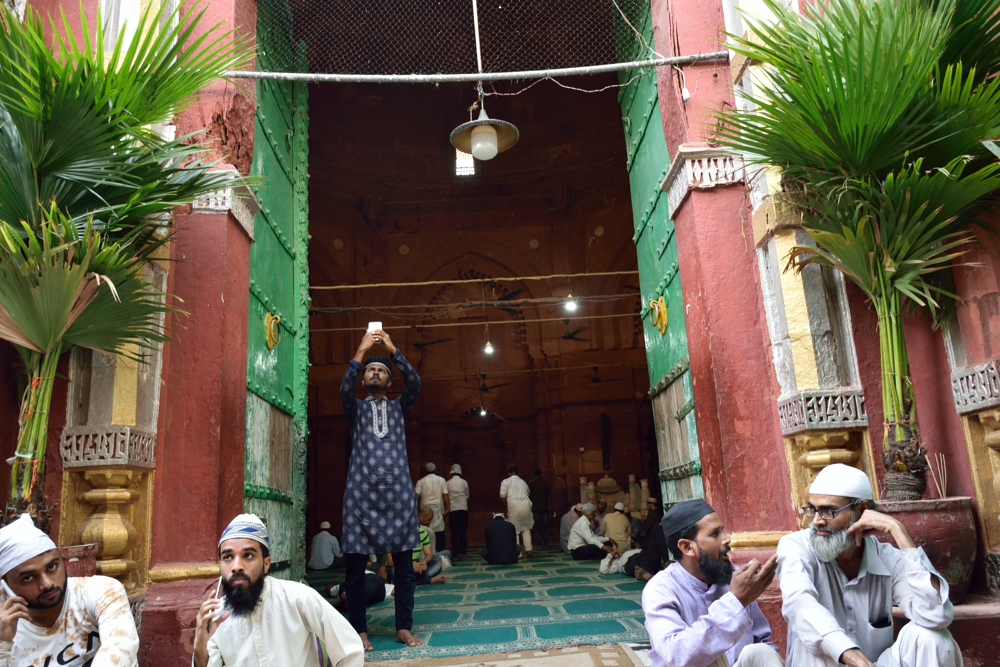
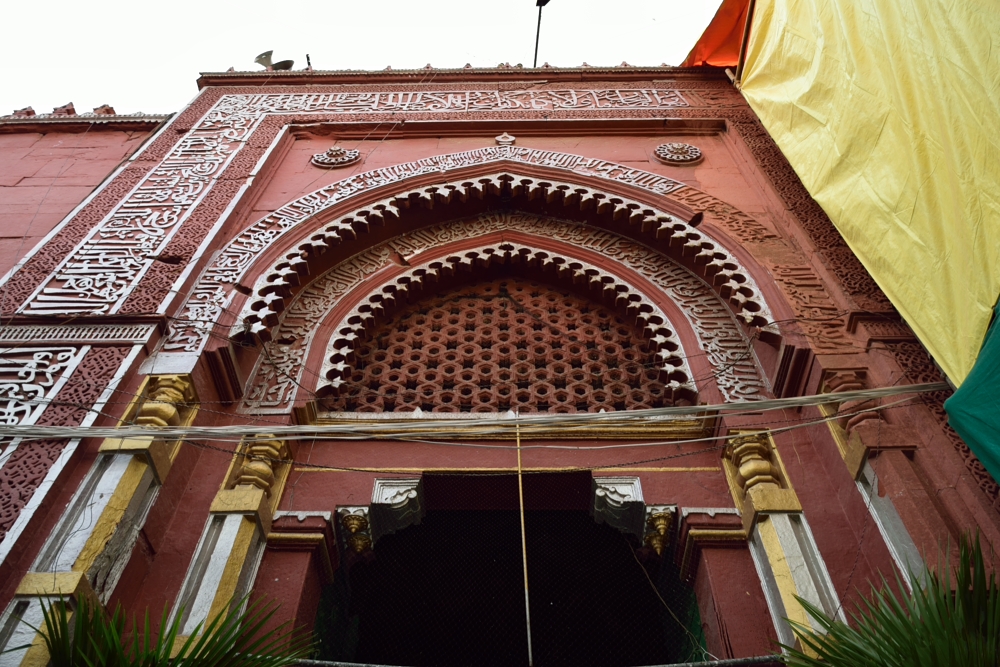
Approach: Approximately 550 meters west of PS Nizamuddin bus stop via Dargah Road and approximately 75 meters southeast of the Baoli of Nizamuddin. Airport: Indira Gandhi International (IGI) Airport Railway Station: Nizamuddin Railway Station Bus Station: Nizamuddin Bus Stop
This mosque is the oldest monument in the Nizamuddin group of structures. It was built by Khizr Khan, the son of Sultan Ala-ud-din Khilji (who ruled from 1296 to 1316 A.D.). Khizr Khan constructed this grand edifice and named it the Jamaat Khana Mosque, meaning a congregation house mosque. Later, during the reign of Muhammad Tughlaq (1325-1351 A.D.), the Sultan expanded the mosque by adding side chambers. This was done both to accommodate the growing number of worshippers and to express his deep reverence for the saint associated with the site. Local/Traditional Description Associated with the Site Regular prayers continue to be held at the mosque, along with other significant religious ceremonies. The site remains a place of worship and spiritual gathering, carrying forward its centuries-old tradition of devotion. Architectural Style The mosque follows the Tughlaq architectural style, characterized by robust construction, simplicity, and minimal ornamentation. Description of the Building/Structure/Site The Jamaat Khana Mosque is an impressive three-bay structure that embodies the architectural principles commonly seen in Khilji-Tughlaq era buildings. The mosque features: Thick, sloping walls that provide strength and durability. Arched entrances that enhance the structural stability and aesthetic appeal. Jaalis (stone lattice work), allowing light and air to pass through while maintaining privacy. Sparse ornamentation, a hallmark of Tughlaq architecture. Squinch arches within the interior, which help support the weight of the heavy roof. The mosque is constructed primarily from red sandstone, a material frequently used in Indo-Islamic architecture due to its durability and aesthetic richness. Dimensions and Structural Details The mosque measures 29.2 meters in length and 17.22 meters in width, with a roof height of 14.4 meters. The central chamber of the mosque has an internal measurement of 11.55 meters and is topped by a low dome with a diameter of 11.34 meters. The side rooms, each measuring 16 meters by 5.7 meters, were later additions to the mosque. These rooms are covered by twin domes, further enhancing the structure?s grandeur. The roof parapet is crowned with a battlement of spearhead pattern, a distinct feature of Tughlaq architecture. Decorative Elements The mosque's archways feature Quranic inscriptions, a common practice in Islamic religious architecture to add a sacred element to the structure. The paintwork on the mosque is a later addition, along with the silver calligraphic inscriptions running along the arched entrance and front fa?ade. The ornamental pillars, floral motifs, medallions, and lotus bud indentations along the double arches have been painted in red and silver, creating an eye-catching yet balanced aesthetic. The side chambers, painted glistening white on the inside, are adorned with intricate incised plasterwork featuring medallions in red, green, yellow, and blue on the dome interiors. These side chambers were specifically designed as seating areas for women, allowing them to participate in religious gatherings while maintaining the traditional separation from the men?s prayer areas. Materials Used in Construction The mosque is primarily constructed using sandstone and locally sourced stone. The red sandstone, which dominates the exterior, is complemented by the intricate jaali work and decorative elements. The plasterwork and paint, introduced later, add vibrancy to the structure while preserving its historical integrity. Conclusion The Jamaat Khana Mosque stands as a testament to Tughlaq-era architectural ingenuity, combining simplicity with grandeur. Despite its age, it continues to function as a place of worship, maintaining its spiritual and cultural significance in the Nizamuddin complex.
Year of Built: 13th - 14th Century
Address: Dargah Complex of Hazrat Nizamuddin Aulia, Nizamuddin Village
Country: India
State: Delhi
District: South Delhi
Pincode: 110013
Longitude: 77 14 30
Latitude: 28 35 28